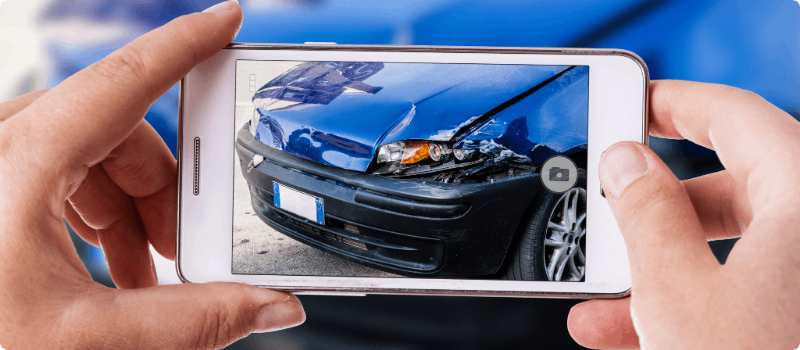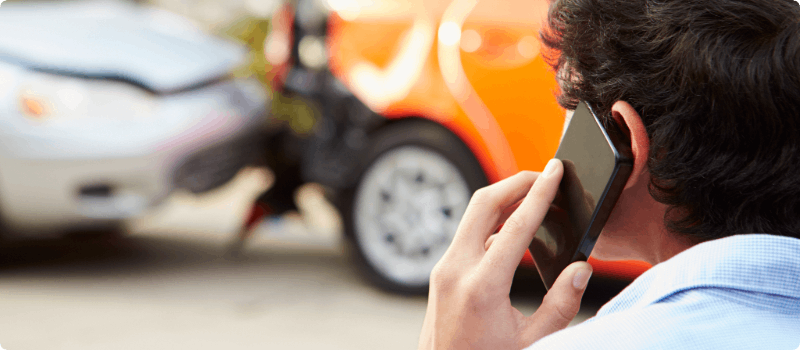Uninsured Motorist Coverage
Learn more about how this proactive coverage protects you if you’re in an accident caused by an uninsured driver.
Updated July 11, 2024 . AmFam Team
A minimum amount of liability car insurance is legally required in most states. Yet there are still drivers behind the wheel without insurance. According to the Insurance Research Council, about 1 in 8 drivers doesn’t have auto insurance. And even though you’re a driver who follows the rules of the road, you’re still vulnerable to accidents with uninsured drivers. We’ve laid out how to handle accidents with uninsured drivers and the best practices for filing an insurance claim. We hope this gives you the confidence and know-how to take the right steps in the event of the unexpected.
Learn more about how this proactive coverage protects you if you’re in an accident caused by an uninsured driver.
Say you’re sitting at an intersection patiently waiting for the green light. Suddenly, you’re hit from behind, causing you some serious whiplash and probably some damage to your car. After pulling to the side of the road, you get out to assess your vehicle and talk with the driver who hit you. The back of your car is smashed in, and your aching neck is concerning enough to require a doctor visit. The at-fault driver looks panicked. When you ask them for their insurance information, they tell you that they don’t have any. There’s no need for you to panic. Just follow these tips on what to do if you get into an accident with an uninsured driver:
Even if the other person has insurance, it’s always a good idea to call the police when you get into an accident. But if you’re dealing with an uninsured driver, calling the police is even more important. Their report may help get your expenses covered and make the claims process smoother.
Since the other driver doesn’t have insurance, they could face some hefty fines and fees. They might try to offer you money to avoid legal repercussions. At this point, you have no idea what your damages or injury costs will be. Even if it seems like a good deal, hold off.
Even if the other driver doesn’t have insurance information to give you, you’ll still want to get their contact and vehicle details. Don’t forget to ask for the contact information from any witnesses as well. Their statements may also be beneficial during the claims process.
Get the make and model of the vehicle involved, time and location of the accident. Record the name and badge number of the responding officer. Write down any pertinent details you think could help you when working with your insurance company.

You’ll want to capture any damage done to your car. Also take pictures of the other vehicle, its VIN number, its license plate, traffic signs and the direction each vehicle was traveling. All these are important details that will come in handy when filing a claim.
Now that you have the information you need, you’ll want to contact your insurance company. As an initial step, make sure you say an uninsured driver hit you. That insight will affect the entire process. Here’s where the information you collected will come into play. Have the following on hand when you call your insurance provider to make a claim:
You’ll need your policy number handy.
Remember all those details you wrote down? You’ll be asked to provide a detailed report of how the accident occurred. Have your notes with you to make your report as descriptive as possible.
In this scenario, you won’t have the other driver’s insurance information. You can still provide their name, contact information and anything else the at-fault driver gave you.
You did the right thing and called the police. Now is the time to provide your insurer with the name of the police department, police officer and the police report number.
At American Family Insurance, we’ll work diligently to make sure the claims process is as smooth, convenient and hassle-free as possible. And since we think it’s best to be a step ahead, check out our in-depth guide to the claims process after an accident. We wrote it to help you better understand what happens when you file a claim.
Filing and monitoring the status of your claim is simple and convenient with the MyAmFam app. Download the app today.

The claims process will be somewhat different if you're hit by a driver in a no-fault state. That means no matter who was at fault for the accident, it's your insurance provider who will pay some of or all your medical bills and lost earnings. So, whether the driver has insurance or not, you’ll file the claim with your insurance company.
You never know when or if you’ll have a run-in with an uninsured driver — but it could happen to anyone, at any time. The good news is there’s a way to be proactive about your protection in the event that you’re to be hit by someone without auto insurance.
Uninsured motorist coverage provides protection if you get into an accident with someone who doesn’t have insurance. If you have it, your insurance provider will step in and help cover costs for bodily injuries to you and your passengers. In short, they'll do what the at-fault driver's liability insurance typically does.
Many states require it, though not all. Even if yours doesn't, getting it may help greatly with expenses like medical costs and loss of income.
If you don’t have uninsured motorist coverage, you could take the at-fault driver to court to sue for these incurred expenses. But this could take time and money with no guarantee you’ll win a settlement. You very well could be stuck paying out of pocket for any injuries. Collision insurance coverage can be used to help fix your vehicle.
Having uninsured motorist protection gives you peace of mind when you hit the road. Connect with an American Family Insurance agent to learn more about adding this coverage to your policy today.
You can also check out how our underinsured motorist protection can provide you with a financial safety net in the event of the unexpected.
Did you find this article helpful? You can get more helpful tips and articles all about car accidents all in one, easy-to-find location so you can be better prepared for the unexpected. Check it out Did you find this article helpful? You can get more helpful tips and articles all about car accidents all in one, easy-to-find location so you can be better prepared for the unexpected. Check it out here.
This article is for informational purposes only and based on information that is widely available. We believe this information is accurate but do not make any guarantees or promise any results based on this information.